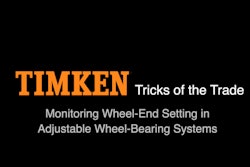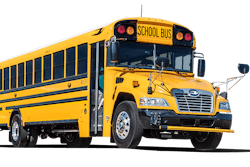No business owner wants a workforce time-loss accident. Doug Huddleston says neither does the Occupational Safety and Health Administration (OSHA).
During a presentation Thursday at Service Opportunities Learning Days (SOLD) at Heavy Duty Aftermarket Week (HDAW) in Grapevine, Texas, Huddleston, an OSHA environmental safety and health programs manager, and University of Texas-Arlington OSHA Educator Robert Braun offered service providers guidance on how to keep shops safe for employees and in compliance with OSHA rules and regulations.
Since its inception in 1970, Huddleston says OSHA’s primarily goals have been to reduce workplace injuries, develop mandatory job safety and health standards and enforcement and develop reporting and record keeping system to monitor job-related injuries and illnesses. He says the agency works hard to maintain standards that are applicable for all workplaces but acknowledges it can take several years for the organization to create new standards for new markets and evolving industries. In the trucking industry, where technology changes almost daily, Huddleston says service providers regularly face workplace challenges that have not yet been defined by OSHA.
He says in those instances it is imperative business owners and associates focus on safety first. He says many established and developing OSHA regulations are common sense safety precautions. He adds OSHA tries “to be transparent and get the word out when a standard changes” and says service providers can subscribe to OSHA newsletters and marketing materials to keep up to date on regulations and best practices for workplace safety.
When it comes to workplace inspections, Braun says it’s important to recognize most inspections are prompted by anonymous worker complaints.
He says companies that prioritize good housekeeping and workplace safety not only avoid workplaces injuries but also the costly fines that can come from an impromptu examination.
 OSHA’s most frequently cited serious violations
OSHA’s most frequently cited serious violationsDuring Thursday’s presentation Braun detailed the most common workplace violations recorded during inspections and OSHA’s key workplace protection procedures. He says most of the latter all self-evident, such as protective guards on dangerous shop equipment, proper clothing when handling with dangerous chemicals and fall guards for employees working more than four feet off the ground (i.e., technicians repairing a trailer side panel or roof).
Braun says business owners should be aware of these guidelines and include them in their shop processes but adds to not miss the forest for the trees. The goal of workplace safety should be keeping employees safe at all cost, not necessary earning a perfect score during an inspection.
“You should be in the people business,” he says. “It’s all about your people and keeping them safe.”
Additionally, Braun notes OSHA offers a compliance arm that offers instruction and guidance for small businesses (under 200 people) to ensure their workplaces are safe.
Yet coordinated workplace procedures and safety protocols don’t eliminate the risk of a workplace accident or inspection. Huddleston confirms Braun’s point that most OSHA inspections are prompted by external tips but says the organization also performs thousands of random inspections. In those instances, he says it is best for a business to be welcoming and cooperative. That means allowing entry — “You can refuse an OSHA inspection; [but] they’re going to come back with a warrant,” Huddleston says — and escorting the inspector through the facility.
Service shops also should record all violations noted by an inspector so they can be immediately addressed during or after the inspection concludes. Huddleston says correcting a violation during an inspection doesn’t wipe out the violation but it can reduce the likelihood and severity of a penalty.











